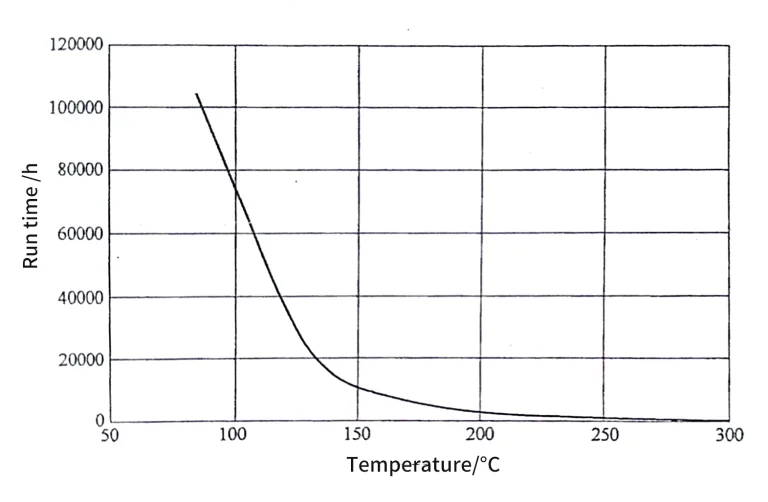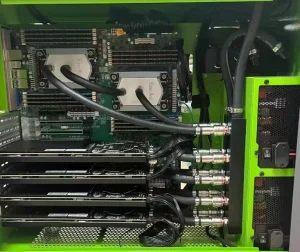Evaluation Criteria for Thermal Design Solutions
In the era of information technology and artificial intelligence, the widespread use of various electronic products has become a crucial support for everyday life and numerous industries.
Among electronic products, excessive chip temperature is one of the most common causes of product failure. For example, in devices like personal computers and smartphones, performance degradation after prolonged use can be attributed not only to excessive data fragmentation generated during software operation, but also to internal structural damage caused by continuous high-temperature operation of the chip. This internal damage is a significant, though often overlooked, factor in performance decline.
For instance, after prolonged use, a personal computer may show limited performance improvement even after replacing the hard drive and operating system. This is because the internal hardware, especially the chip, suffers from “damage” due to temperature, and this damage worsens over time, leading to gradual performance deterioration.
In fact, apart from external physical impacts such as water ingress, drops, shocks, etc., nearly all electronic chip failures are directly attributed to high temperatures. According to a study by the U.S. Air Force Aerospace Electronic Integrity Program, failures caused by high temperatures accounted for 55% of all product failures (data from around 1990). It is important to note that with the continuous increase in transistor density, the impact of temperature on chips has become even more significant.
Regarding the effect of temperature on the operational lifespan of electronic products, a close estimate indicates that for every 10°C increase in chip temperature, the lifespan of the chip is halved (based on the Arrhenius equation). This temperature increase occurs within the chip’s normal operating temperature range.

Figure 1-2
Figure 1-2 illustrates the relationship between the operational lifespan of a typical chip and temperature variation. It is clear from the graph that within the 70°C to 140°C range, the operational lifespan of the chip rapidly decreases as the temperature increases.
However, temperature control is not only about preventing chip failure. Taking LED chips as an example, they are highly sensitive to temperature fluctuations. Variations in temperature can lead to changes in light output and cause the peak wavelength of the light to shift. For LED lighting, temperature not only affects lifespan but also causes a significant drop in light output efficiency as junction temperature rises. When the light output efficiency decreases, the LED must generate more heat to maintain the same brightness, leading to higher energy consumption.
Similarly, increased junction temperature also affects the energy efficiency of functional chips. In higher temperature environments, the chemical activity of materials increases, and their properties become more unstable, leading to reduced stability of the chip.
Therefore, the temperature of the chip directly impacts three core factors of electronic products:
- Operational lifespan;
- Energy efficiency;
- Performance stability.
Even if electronic products function normally during initial testing, it does not guarantee their long-term reliability. A high-quality electronic product that can withstand market demands must undergo precise temperature control design. For popular consumer electronics such as smartphones, tablets, and gaming consoles, managing not only the chip temperature but also the temperature of the product’s casing is a key factor in ensuring a positive user experience.
When the chip is operating normally, a strong electric field is generated inside it. If external moisture or salts come into contact with the chip’s surface, electrochemical reactions may occur. In a high-temperature environment, electrochemical corrosion of certain electronic components intensifies.
Chip corrosion is closely related to the external environment. In ideal environments where no reactive substances are present, the internal materials of the chip can still decompose. As decomposition progresses, the electrical properties of the chip undergo significant changes. The degree of performance degradation is closely related to the extent of the decomposition.
Each chip’s optimal operating performance can only be achieved at a specific temperature or within a narrow temperature range. If the temperature is too high or too low, the chip will be unable to perform its intended functions.
For all electronic products, there are two primary methods to ensure temperature safety:
- Optimize the packaging materials and manufacturing processes of the chip so that they can withstand higher temperatures—Chip Packaging Design;
- Design an external heat dissipation system to maintain the components within an optimal temperature range—Product System Thermal Design.
The goal of thermal design is to transfer heat along a designated path in a reasonable manner, precisely controlling the temperature of various parts of the product.
A well-designed thermal solution should include the following features and strike a reasonable balance among the requirements:
- Ensure the product operates stably in all potential usage scenarios, guaranteeing thermal safety;
- Control costs to ensure the design is economically viable;
- Ensure good maintainability of the design;
- Ensure long-term stability to avoid performance degradation due to poor thermal management;
- Provide effective warning strategies and responses for abnormal situations;
- Achieve a balance between product aesthetics and thermal management;
- Ensure noise control in the design of air-cooling systems, enhancing the user experience;
- Demonstrate excellent adaptability to operating conditions and ability to handle abnormal situations;
- Meet energy-saving and environmental standards.
The specific thermal design goals must be tailored to the product’s characteristics. For example, in consumer electronics, aesthetics play a crucial role and must be balanced with thermal management. For products like inverters and outdoor base stations, the primary concern is the reliability and functionality of heat dissipation. In aerospace and other high-reliability sectors, stability and reliability are the core metrics, while cost and aesthetics are of relatively lower importance.




